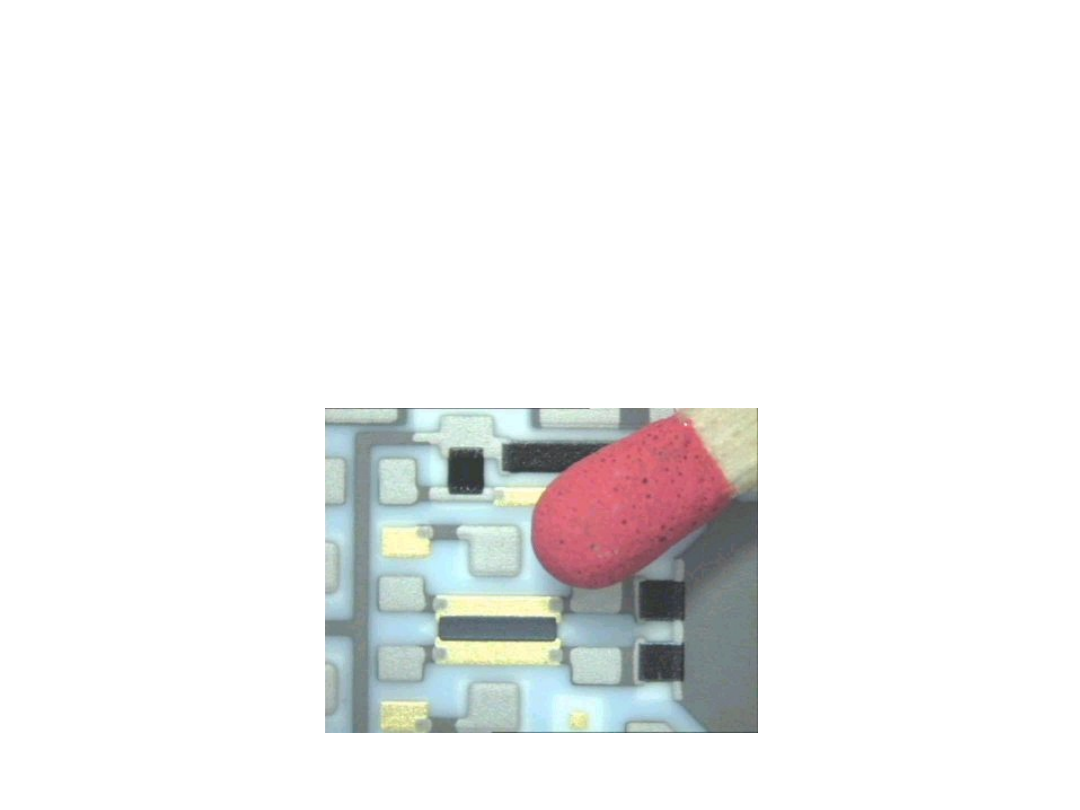
Technologia
grubowarstwowa
Thick-film technology

Zalety
Highly reliable due to reduction of soldering
(compared to FR4)
Uniform thermal distribution within the circuit, good thermal conductivity (20W/mK compared to 0,25 W/mK for FR4)
High long-term stability and reliability
First choice for RF technology
(ε
r
=9.9, independent of frequency in large ranges)
High integration level
Laser trim of resistors to individual value, trim factor up to 20 and above (absolute & relative trims)
Resistors with tight tolerances and temperature coefficients
Active laser trim of application parameters (voltage, current, frequency a.o.) enables use of economical components
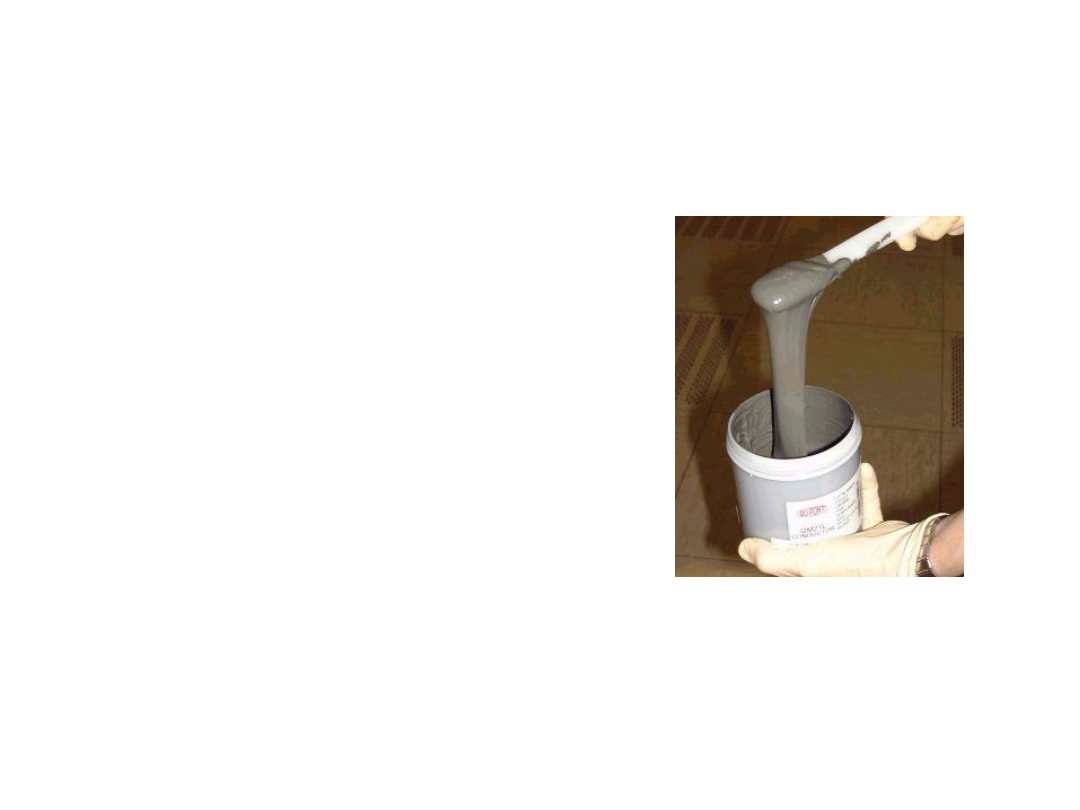
Pasty
PASTES
(Printing accuracy ≥ ±50 µm)
Conductive layers:
Material:
AgPd, AgPt, Au
Square resistivity:
5mR to 35mR
Width / Interspaces:
150μm
Dielectric (Insulators):
Breakdown voltage:
650 - 2000 V (dependent on pastes and design)
Number of prints:
2 - 3
Total thickness:
typically 40μm
Resistors:
Range standard:
0R5 ... 50Mohm
Geometries:
minimum 0.4 x 0.4 mm
Tk (non aligned):
<50ppm, <100ppm (dependent on pastes)
Working voltage/Pv:
dependent on geometry
Overglaze:
low temperature encapsulation ( green)/ high temperature encapsulation / passivation layer with screen process printing
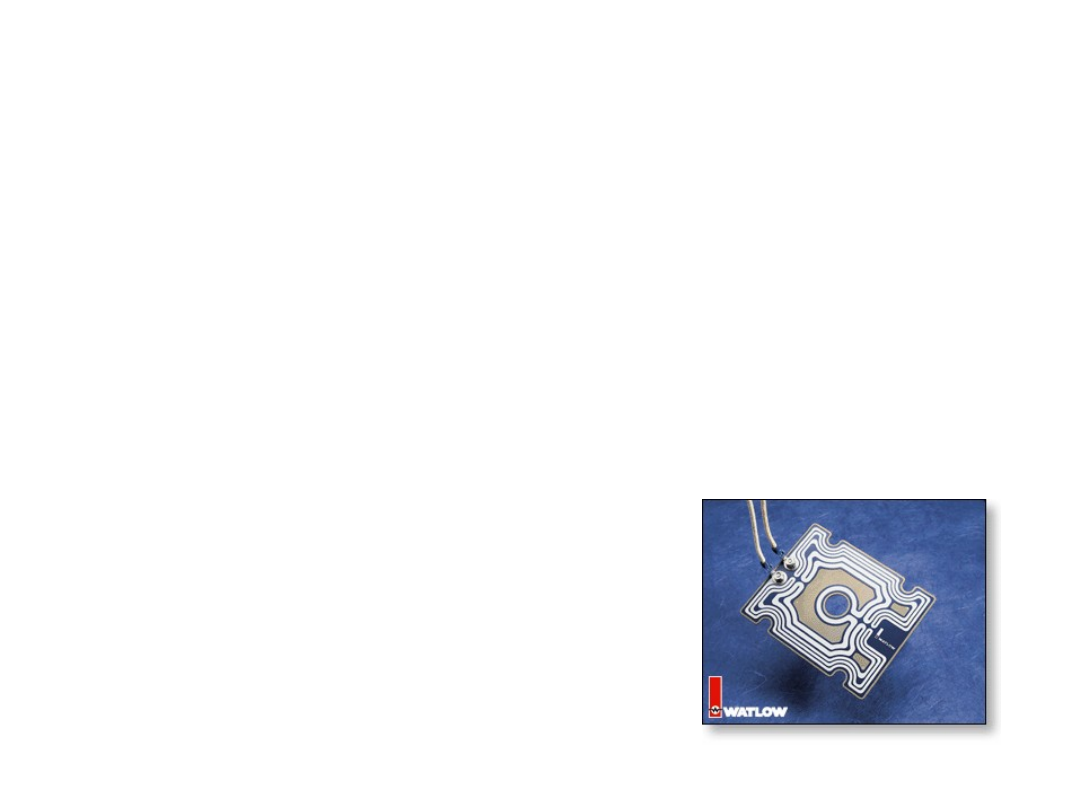
Podłoża
Materiał: Al
2
O
3
, 96%
Standardowe wymiary:
4" x 4" bis 4" x 5" (20x30 lub 30x50
mm)
Grubość: 0,63, 1mm (także inne, wg
specyfikacji)
Przewodność cieplna: 20 W/mK
Względna przenikalność elektryczna:
9,5
Podłoża metalowe
emaliowane
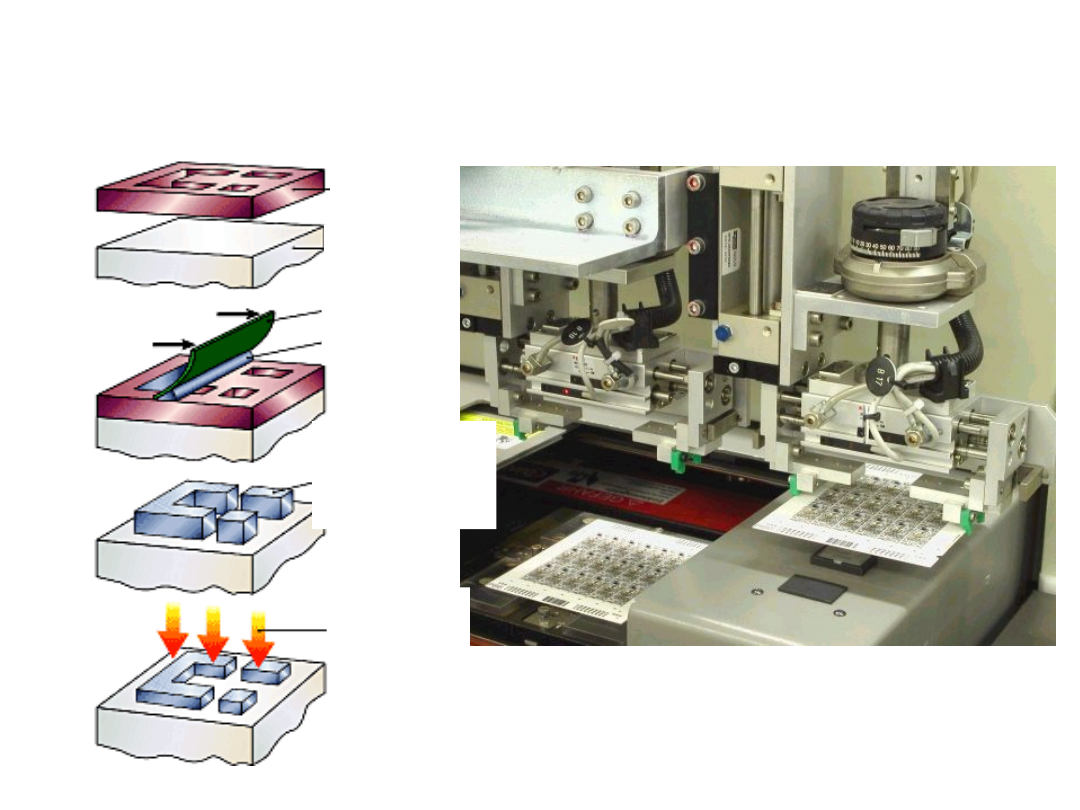
Główne procesy technologiczne
Sito
Podłoże
Rakla
Pasta
Pasta
po na-
drukowaniu
Wypał
w 850
o
C
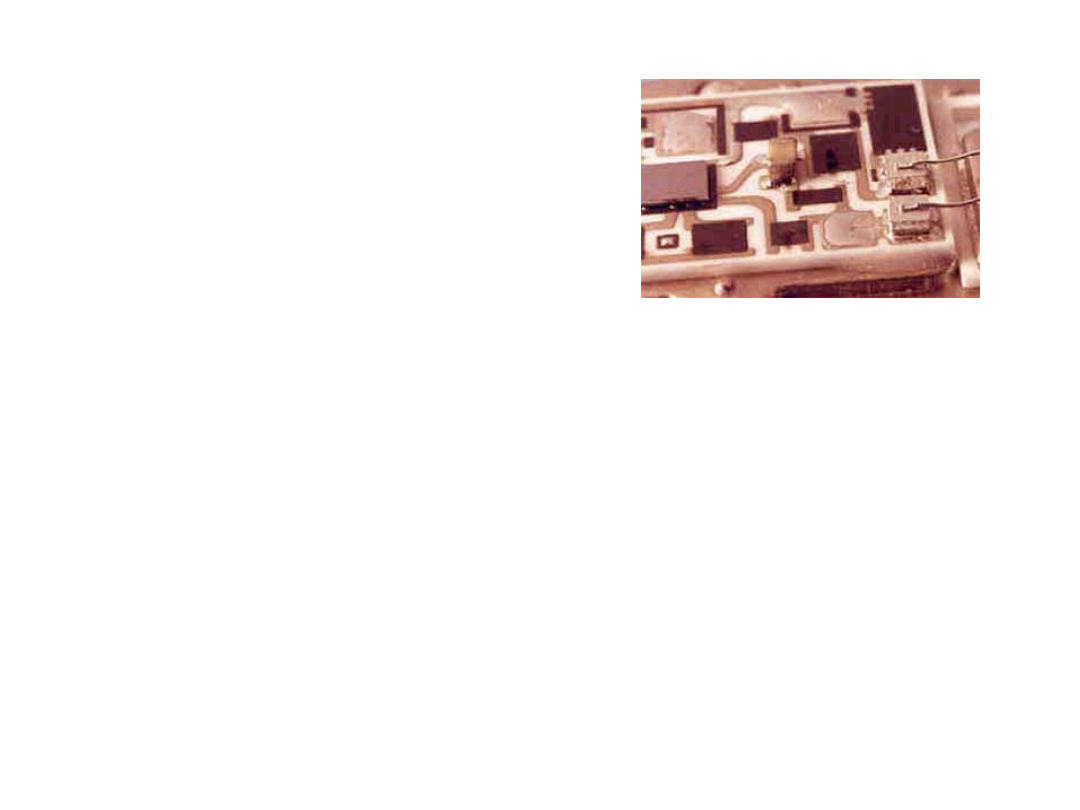
Warstwy cienkie a grube
Charakterystyka
Cienkie warstwy (typowe) Grube
warstwy (typowe)
Grubość warstw (µm) 0.01 - 1
5 - 40
Szerokość ścieżki przew./odstęp (µm) < 25
25
Procesy technologiczne zróżnicowane i łączone łączone i
zróżnicowane
Koszt urządzeń
duży mały
Materiały przewodzące Au, Al, Cu, ITO Au, Pt-Au, Cu, Ag, Pd-Ag, Pt-Ag
Materiały dielektryczne
polyimide, SiO
2
, Si
3
N
4
Al
2
O
3
, szkło,
ceramika, BaTiO
3
Materiały rezystywne NiCr, TaN
RuO
2
, Bi
2
Ru
2
O
7
Podłoża
Al
2
O
3
, AlN, BeO, SiC, szkło, Si, kwarc, szafir
Al
2
O
3
, AlN
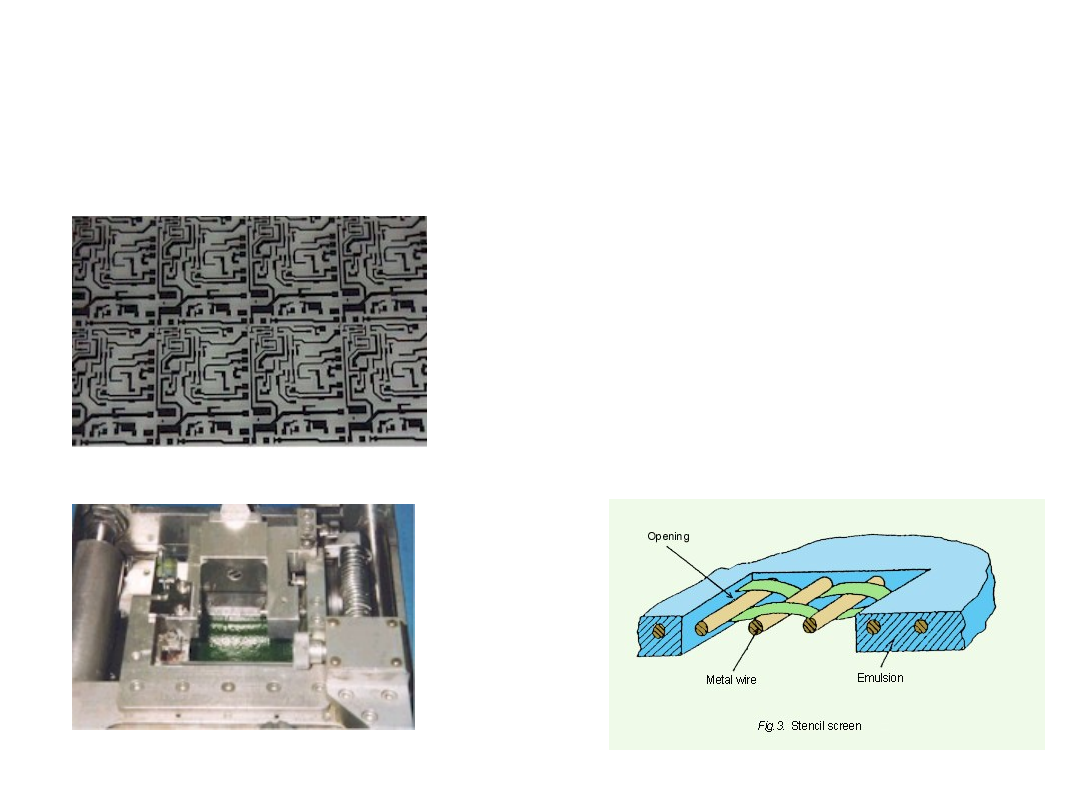
Procesy technologiczne
fotomaski
Sitodruk
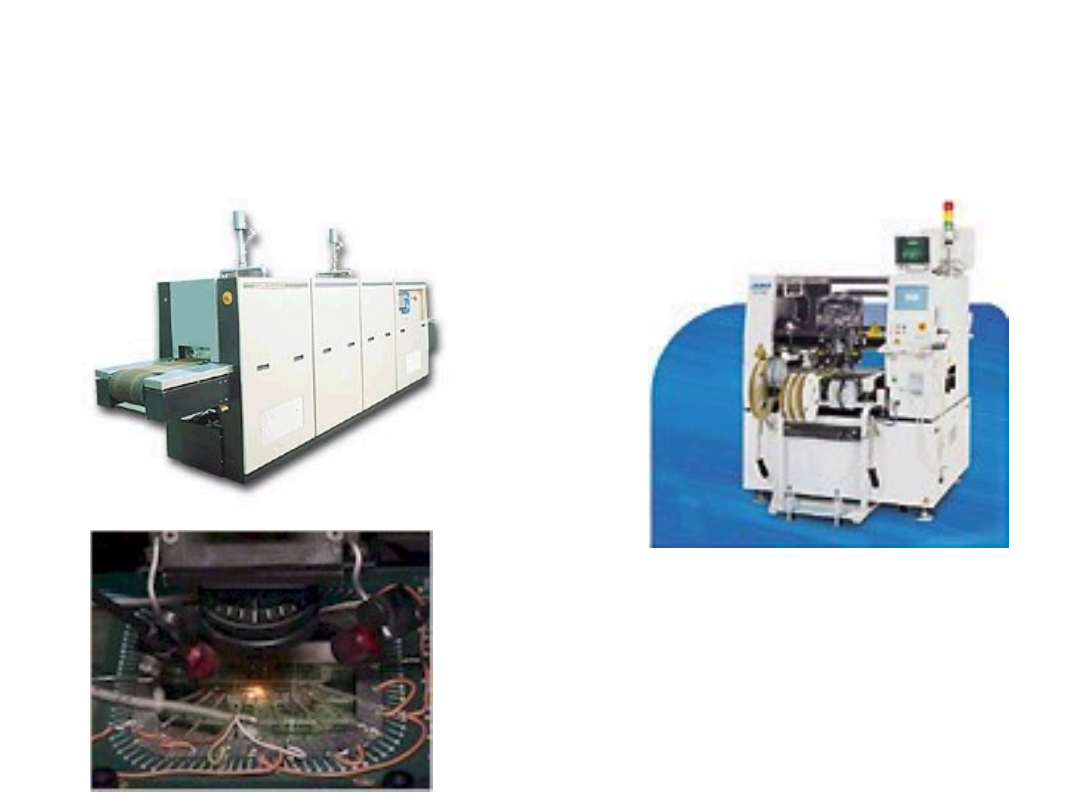
Procesy technologiczne
wypał
korekcja
montaż
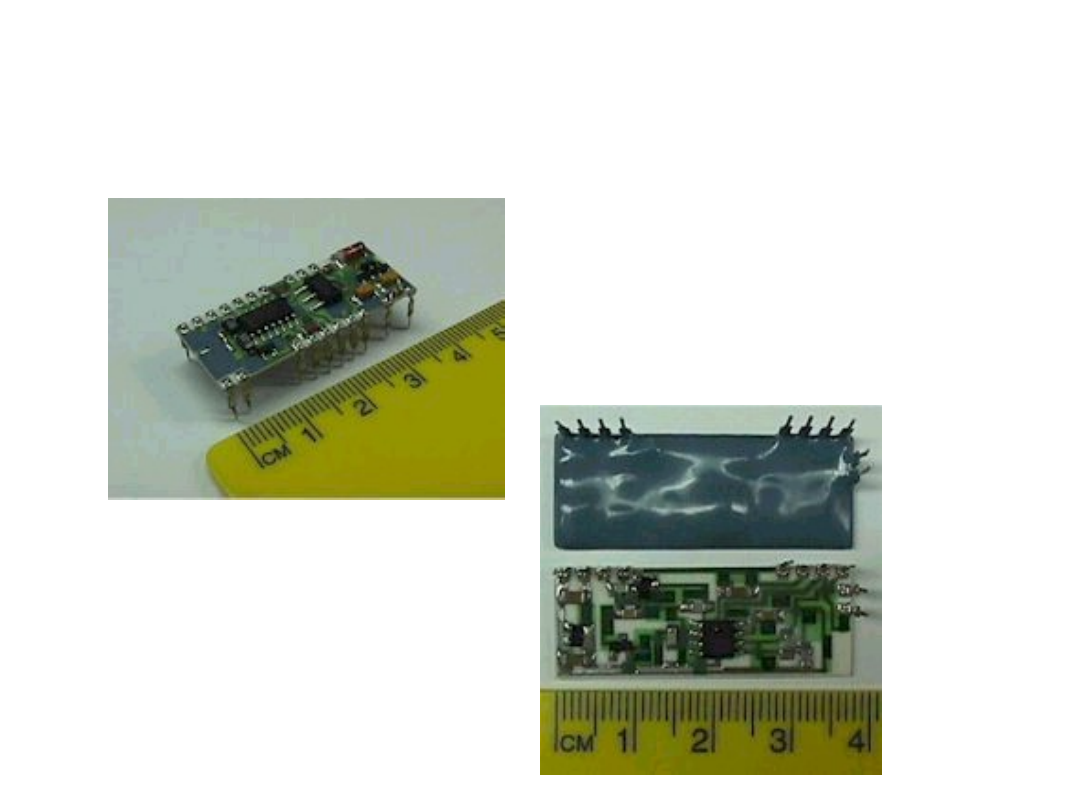
Procesy technologiczne
Montaż doprowadzeń (pinów)
Hermetyzacja
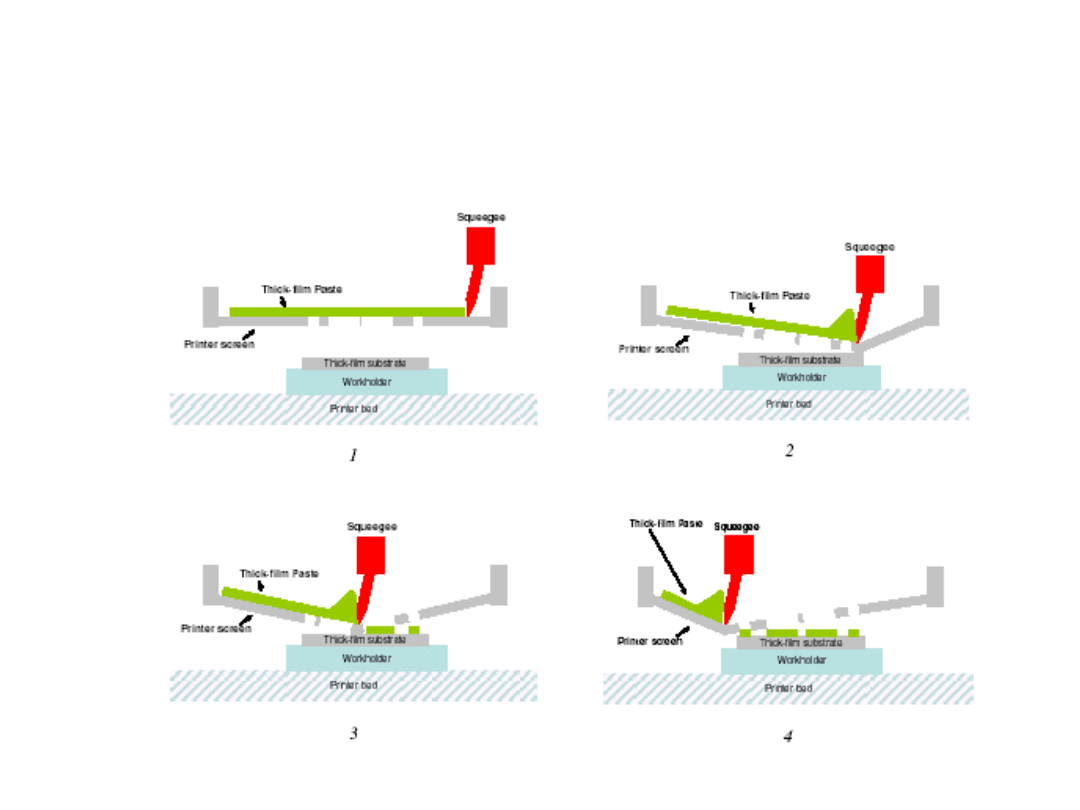
Sitodruk
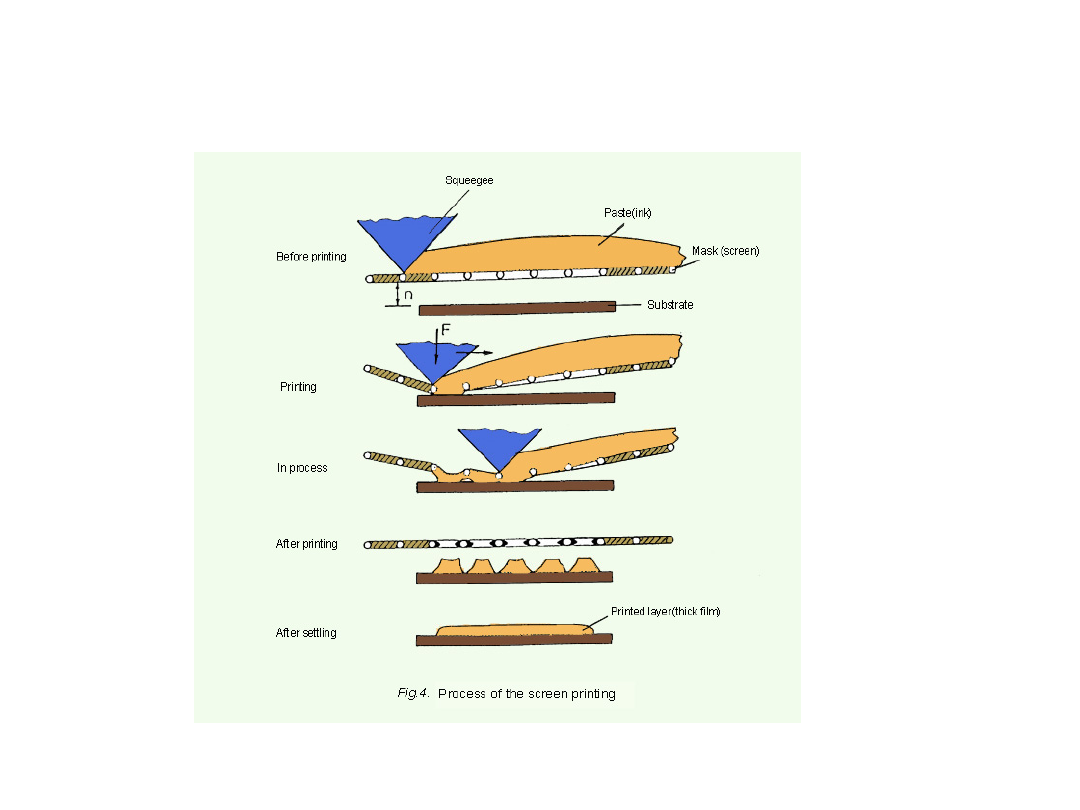
Proces sitodruku
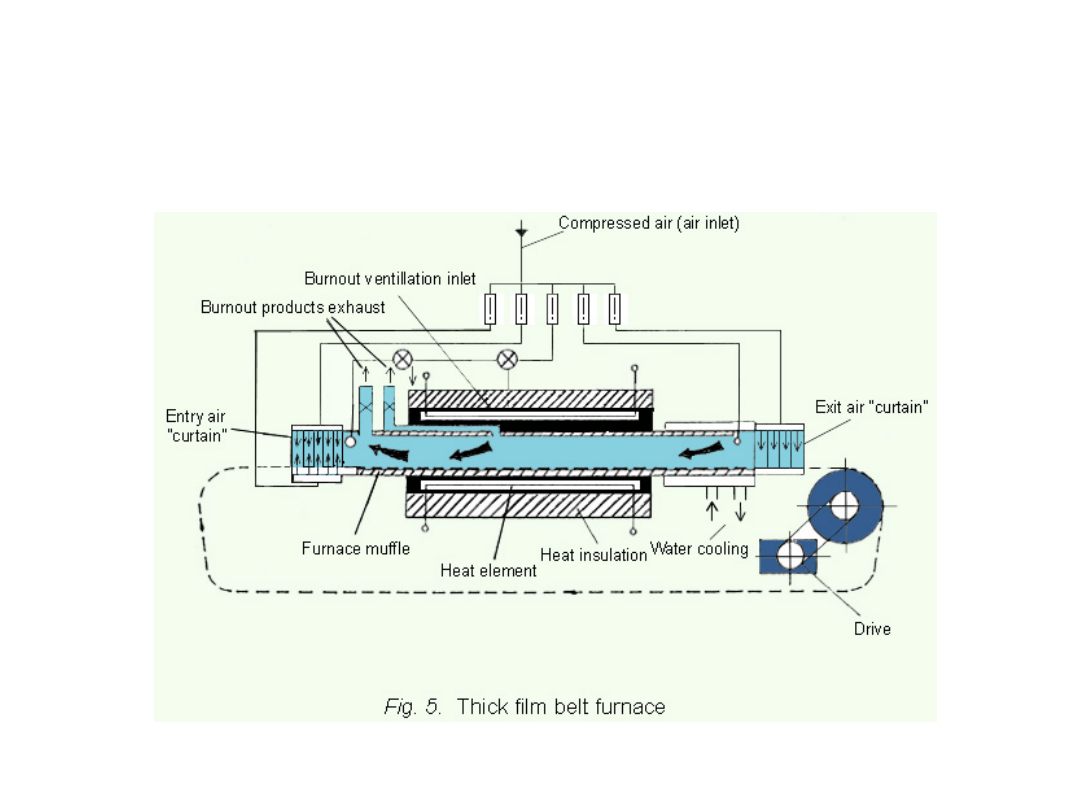
Piec tunelowy
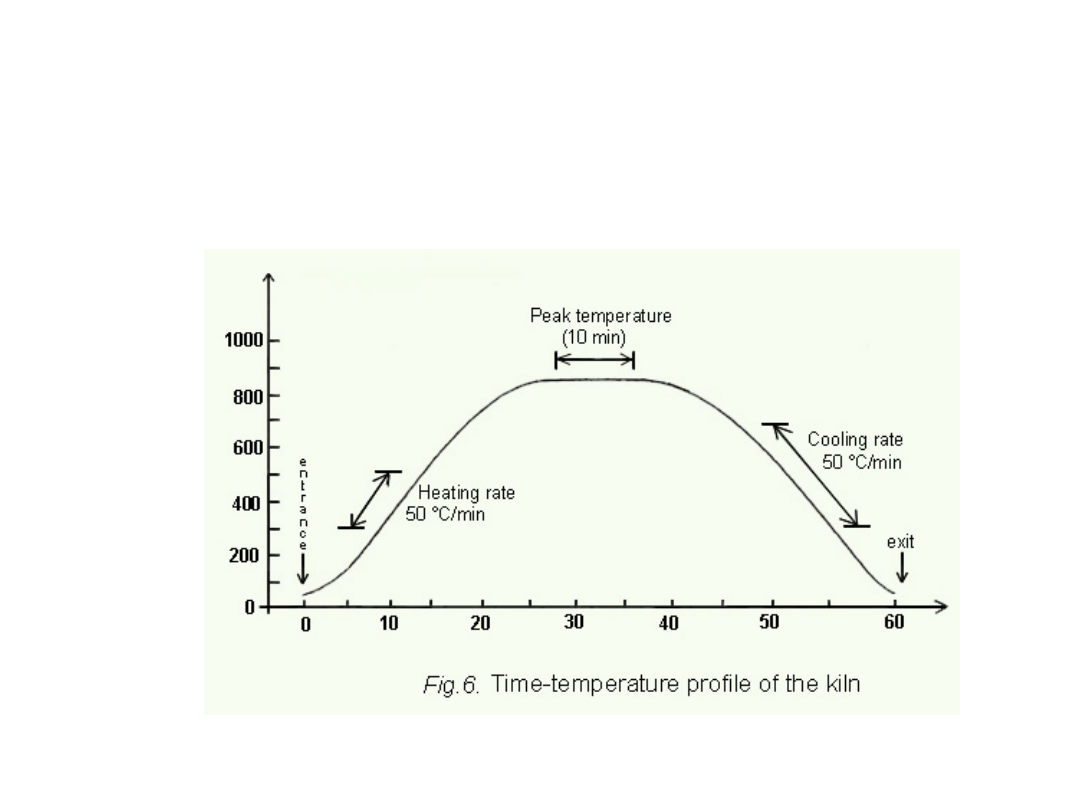
Profil temperaturowy wypału
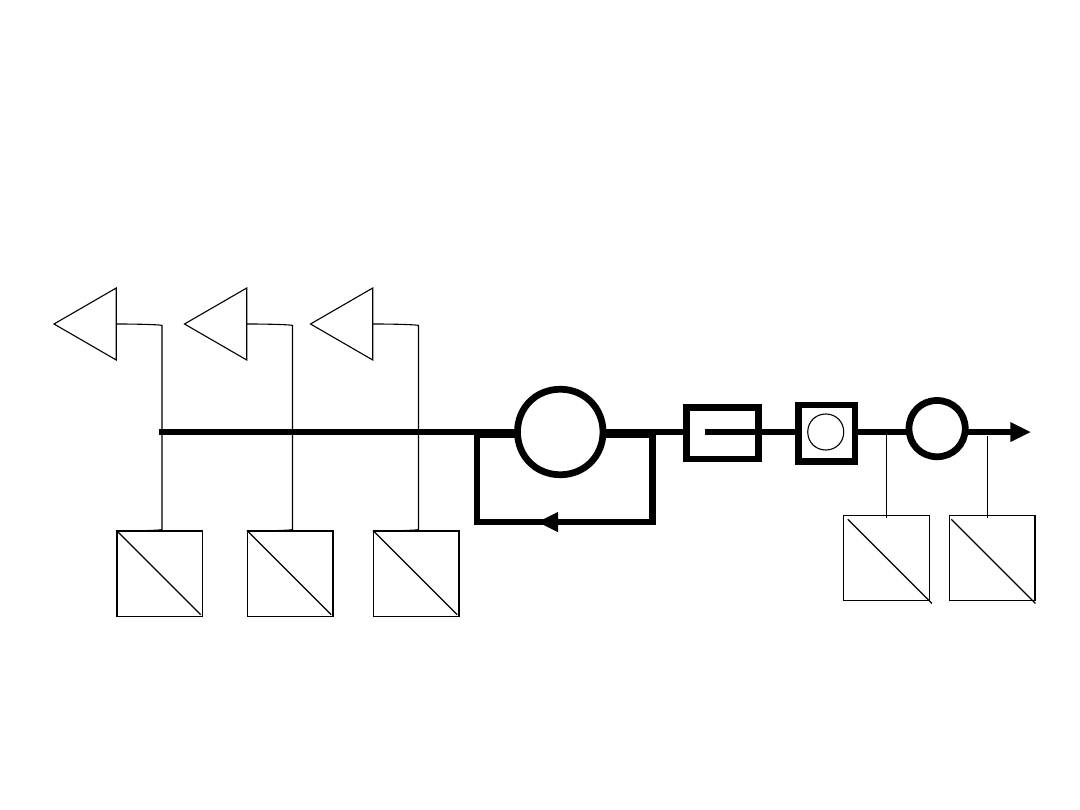
Przebieg procesów
P
o
d
ło
ża
P
a
st
y:
•
p
rz
e
w
o
d
zą
ce
•
re
zy
st
yw
n
e
•
d
ie
le
k
tr
yc
zn
e
S
it
a
Sitodruk
suszenie
wypał
każdej
jednostki
Kontrola jakości
wstępna na próbkach
K
o
re
k
c
ja
la
se
ro
w
a
k
a
żd
e
g
o
e
le
m
e
n
ty
Kontrola jakości:
•sitodruku
•korekcji
M
a
g
a
zy
n
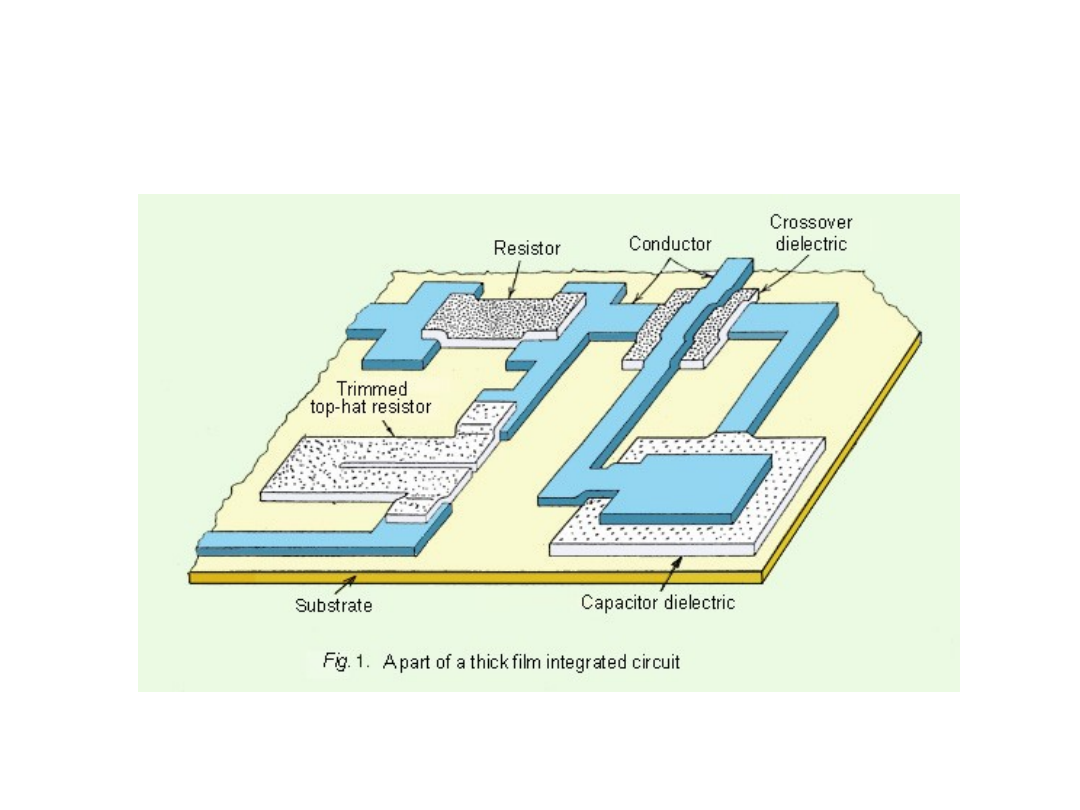
Elementy grubowarstwowe
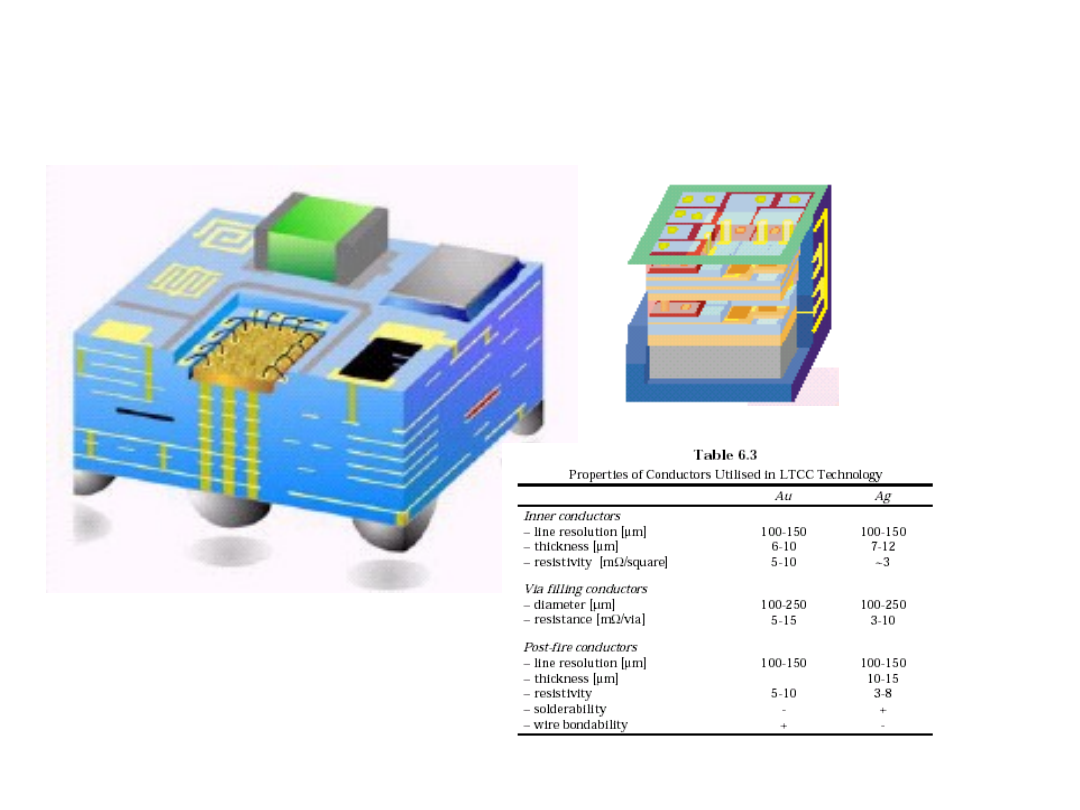
LTCC
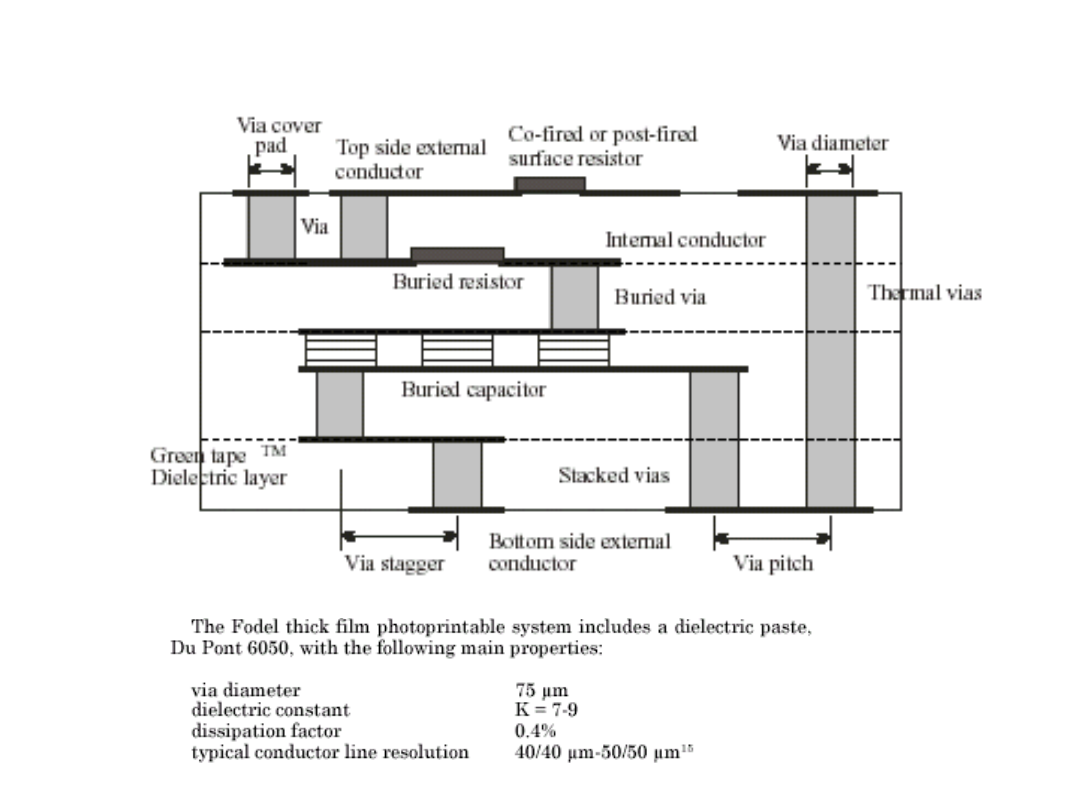
LTCC - przekrój
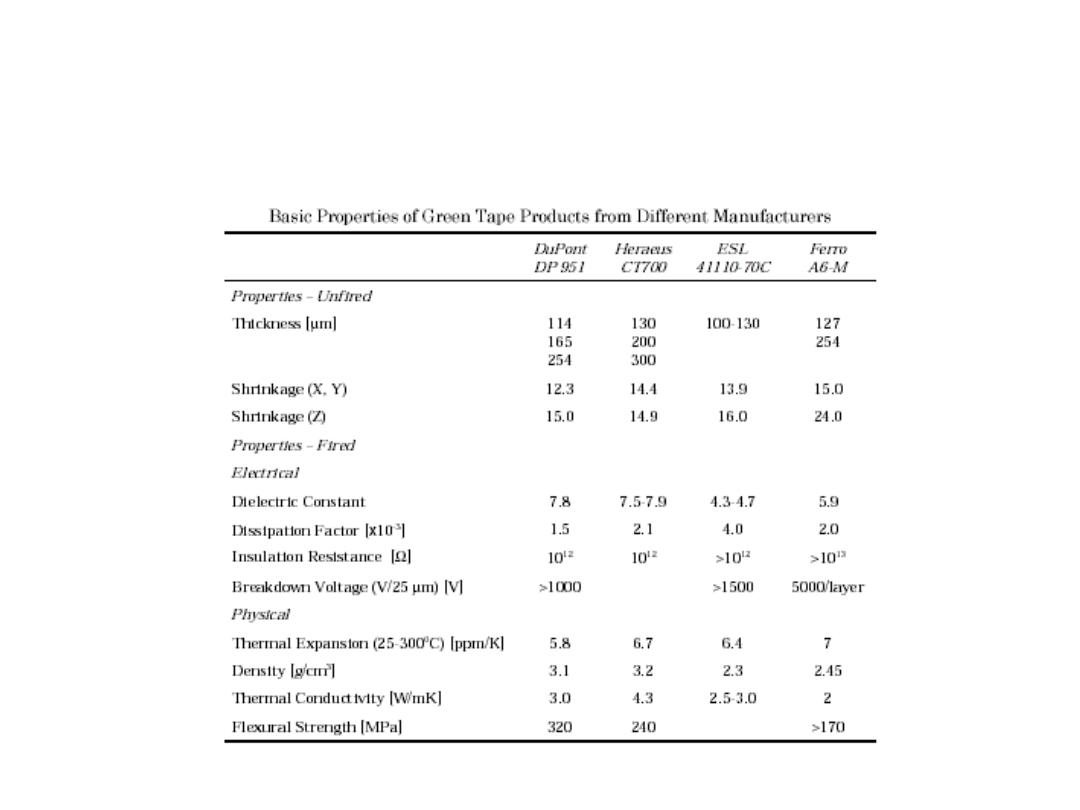
Green-tape
Document Outline
- Slide 1
- Slide 2
- Slide 3
- Slide 4
- Slide 5
- Slide 6
- Slide 7
- Slide 8
- Slide 9
- Slide 10
- Slide 11
- Slide 12
- Slide 13
- Slide 14
- Slide 15
- Slide 16
- Slide 17
- Slide 18
Wyszukiwarka
Podobne podstrony:
Grubowarg dwubarwny (labeo bicolor)
Grubowarstwowe
Grubowarg dwubarwny (labeo bicolor)
Kosiarka (Grubowarg Syjamski) Crossocheilus siamensis
więcej podobnych podstron